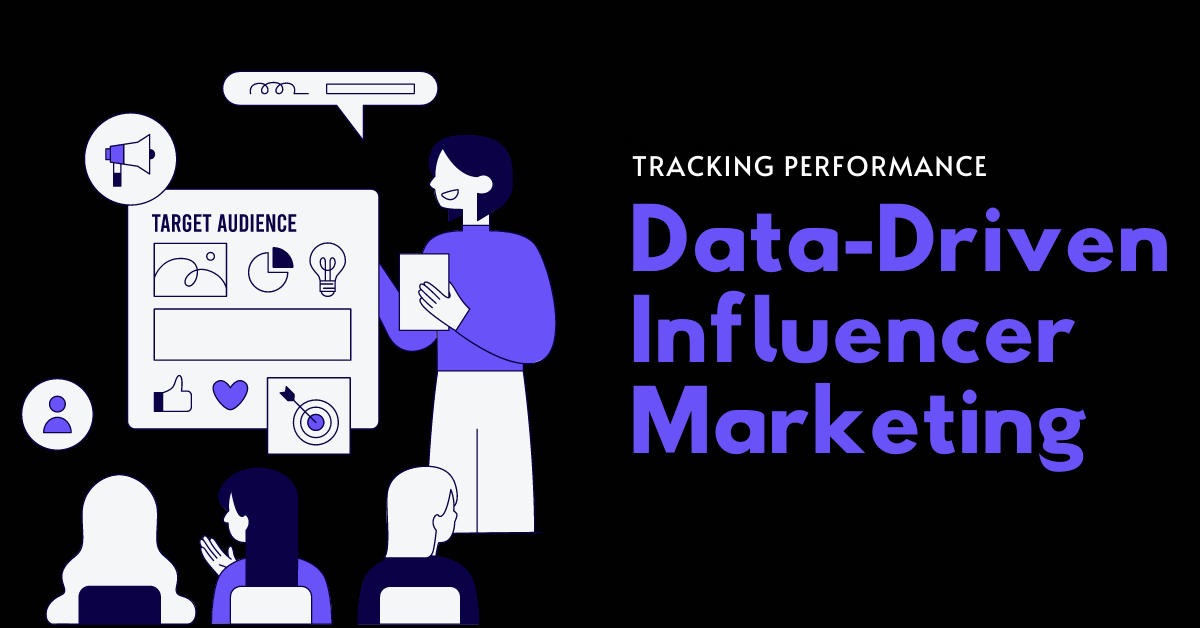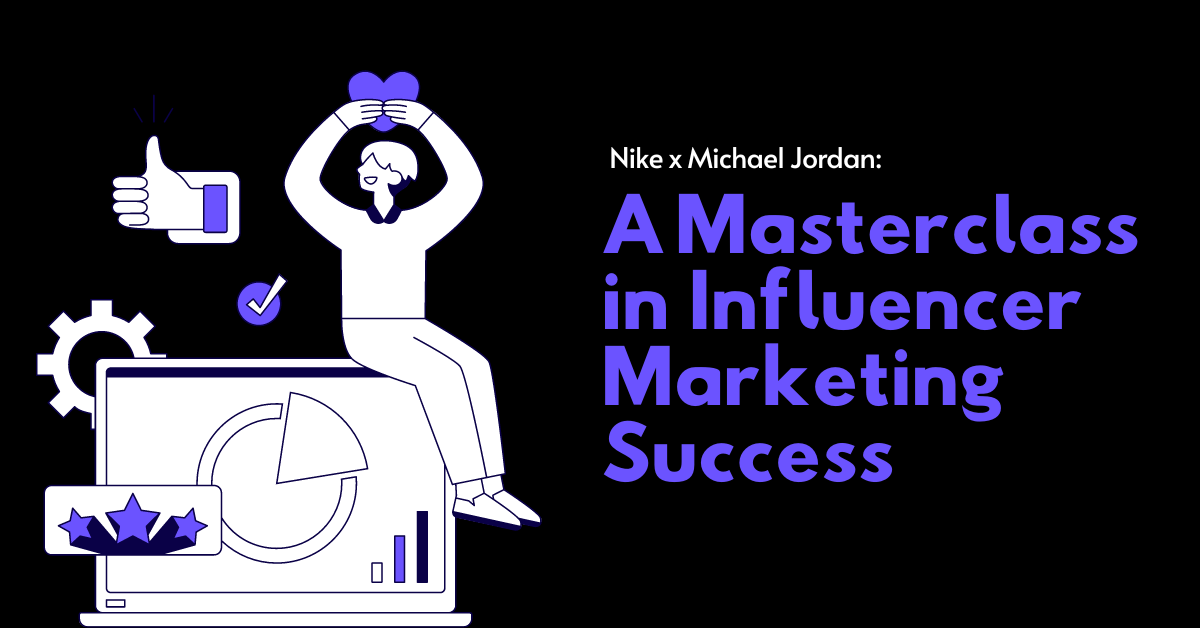Influencer Marketing has grown into a $21.1 billion industry – and for good reason. Studies show brands see an average return of $5.78 for every dollar invested in Influencer Marketing. But there’s a catch: tracking exactly how much impact an influencer campaign has can be a challenge. In fact, 60% of marketers say measuring ROI is their biggest hurdle with Influencer Marketing.
So, how can you get a clear picture of your Influencer Marketing success? In this blog post, we’ll guide you through key metrics and data-driven strategies that go beyond reach, helping you to check the effectiveness of your influencer campaigns. We’ll show you how to track the right Key Performance Indicators (KPIs), so you can maximize your return on investment and turn Influencer Marketing into a winning strategy for your brand.
What is Data-Driven Influencer Marketing?
Data-driven Influencer Marketing is a strategic approach that leverages data and analytics to inform decision making throughout the Influencer Marketing process. While many think analyzing influencer campaign performance is where data comes in, it begins before brands even engage with an influencer.
Data guides all types of decisions regarding the campaign, informing everything from the need for a campaign to its goals and ultimately helping brands define success by bridging the gap between their current reality and their desired outcomes. Instead of relying solely on follower count or popularity, data-driven Influencer Marketing focuses on collecting and analyzing key data points, such as audience demographics, engagement metrics, and campaign performance. It enables brands to identify the most effective influencers, optimize content strategies, and accurately measure ROI. For instance, if a sports apparel brand wants to reach fitness enthusiasts aged 25-35, data can help identify the most relevant influencers, content formats that resonate, and accurate metrics to measure engagement from this specific demographic.
Common Challenges in Tracking Campaign Performance
While the benefits of Influencer Marketing are undeniable, tracking its true impact can be tricky. Here are some common challenges brands face:
- Vanity Metrics vs. Actionable Insights: Focusing solely on vanity metrics such as follower count or likes doesn’t tell the whole story. Data-driven Influencer Marketing goes beyond surface-level numbers and uncovers engagement and actions taken by the audience.
- Attribution Challenges: It can be difficult to isolate the exact impact of an influencer campaign, especially when combined with other marketing efforts. For example, did a website sale come from the influencer’s promotion or a separate ad campaign?
- Lack of Consistent Measurement: Inconsistency in campaign goals and tracking metrics across different influencer partnerships make it hard to compare performance and identify trends.
These challenges highlight the importance of creating a clear measurement framework before launching an Influencer Marketing campaign. By defining KPIs aligned with your brand goals, you can gather the right data and gain valuable insights to continually optimize your Influencer Marketing strategy.
Benefits of Data-Driven Influencer Marketing
Influencers have become trusted authorities within their communities, having significant power in shaping consumer purchase decisions. However, in this dynamic environment, brands need to understand that mere social media reach and follower count are not enough to gauge the success of their Influencer Marketing campaigns. The secret lies in leveraging specific data points to gain comprehensive insights into the influencer’s audience, behaviors, and their engagement with the content.
A data and performance-driven approach to Influencer Marketing enables brands to:
- Find Influencers and Optimize Partnerships: Data-driven insights help brands identify the most effective influencers for their target audience, leading to more impactful and measurable partnerships. By analyzing the engagement of content formats, brands can create messaging that resonates with the influencer’s audience and drives desired actions. Also, by evaluating campaigns, brands can find key influencers driving the most value across multiple social media platforms and demographics, enabling strategic planning and investment in top-performing influencers.
- Measure Impact: By tracking and analyzing key metrics, brands can quantify the actual impact of their influencer campaigns, assessing the return on investment (ROI) and adjusting strategies based on real data, rather than assumptions.
- Make Informed Decisions: With intuitive reporting dashboards, brands can visualize data through charts and graphics, simplifying the process of sharing Influencer Marketing performance across teams and key stakeholders, allowing real-time adjustments and optimization based on what’s working and what’s not.
- Maximize ROI: By continuously analyzing and applying data, brands can make decisions that optimize their budget allocation, measure campaign success, and ensure every dollar spent delivers maximum impact.
Key Metrics to Track Influencer Campaign Performance
The success of Influencer Marketing campaigns depends on understanding and leveraging the right data. Brands should focus on tracking and analyzing the following key metrics:
1. Reach and Impressions
- Reach: The number of unique people who have viewed the influencer’s posts.
- Impressions: The total number of views a post has received (note that the same person can be exposed to the same content multiple times).
These visibility indicators are one of the simplest ways to measure brand awareness. However, these just show visibility, not interaction with the content. To get a complete picture, combine visibility metrics like reach and impressions with engagement metrics that gauge actual interactions with the content, such as likes, comments, shares, etc. This comprehensive approach provides a more accurate assessment of an influencer’s ability to drive meaningful brand awareness.
2. Traffic From Social Media
Capturing data on website traffic is crucial, including metrics such as the number of new visitors, frequency of sessions, referral sources, page views, bounce rate, and the amount of time spent on the site. This data provides valuable insights into the effectiveness of the influencer in driving targeted traffic to your brand’s website.
3. Engagement
Monitor engagement metrics such as likes, comments, shares, favorites, reposts, votes, and clicks. High engagement rates serve as a clear and quantifiable measure that the content is resonating with the audience on a deeper level, prompting them to actively engage rather than passively consume it. This is a testament to the influencer’s true influence and ability to authentically connect with their audience.
4. Conversions
Conversion metrics transform online engagements into measurable, tangible outcomes, such as completed sales, new account sign-ups, or other defined actions targeted within a specific campaign. Brands can track these conversions using tools like unique tracking links and custom promotional codes. By accurately tracking conversions, brands can directly correlate the influencer’s efforts with revenue generation, which is essential for both short-term campaign evaluation and long-term strategy development.
5. Brand Awareness and Sentiment Analysis
Social listening tools and analytics enable brands to track their mentions across digital platforms, including those by the influencer, followers, fans, and other users interacting with the influencer’s content. Sentiment analysis goes deeper, providing an understanding of public opinion towards the brand by analyzing the tone, context, and emotions associated with brand mentions. These insights allow brands to identify strengths, weaknesses, and make timely adjustments to their strategy.
6. Audience Growth Rate
This metric quantifies the success of a campaign in converting casual viewers into followers, enabling businesses to evaluate the influencer’s ability to attract and retain a larger audience base for the brand. For brands focused on long-term engagement and loyalty, monitoring audience growth rate is crucial for understanding the campaign’s performance.
While each metric provides valuable insights, no single metric tells the whole story. A truly data-driven Influencer Marketing approach requires a balanced, comprehensive measurement strategy evaluating metrics across multiple stages of the marketing funnel.
When evaluated together, these metrics provide a holistic picture of the campaign’s success, empowering brands to make informed decisions, optimize their influencer partnerships, and drive better results from their Influencer Marketing investments.
If campaign goals are achieved, an influencer campaign can be considered successful. Progress towards these goals serves as an indicator of effectiveness, highlighting areas that are working well and identifying areas for improvement. Metrics also reveal what isn’t working such as misaligned audience demographics or over/under-investment in influencers, allowing for adjustments and refinements in subsequent campaigns.
Tools You Need to Measure Your Influencer Campaigns
To gather the data necessary for evaluating the performance of your Influencer Marketing campaigns, you’ll need to equip yourself with the right tools. Here are two tools you will need:
1. Google Analytics
Google Analytics is a free tool that can help you track key performance indicators (KPIs) related to your website, such as traffic obtained, user behavior, and sales generated. To get started, ensure you have Google Analytics set up on your website and configured to track the relevant metrics. With Google Analytics, you can:
- Set up Campaign Parameters and Goals
Campaign or UTM parameters are codes you can add to the end of your URLs to identify the source, medium, campaign, term, and content of your traffic. This helps you understand how many people clicked on a particular influencer’s post, how many of them converted, and what products they purchased. Additionally, you can set up goals, such as clicks on a particular page or product purchases. By tracking these goals, you can determine how much traffic and engagement is coming from your influencer campaigns.
- Create Custom Segments
Custom segments allow you to separate the traffic and conversions from your influencer campaigns from other channels. These filters enable you to see only the users who meet certain criteria, such as those who came to your website through an influencer post versus those who found you through a search engine. This way, you can compare the performance of your influencer campaigns with other channels and see which offers the highest return.
- Use Attribution Models
Attribution models help you understand how your influencer campaigns influence the customer journey. These rules assign credit to different touchpoints along the path to conversion. By using attribution models, you can see how your influencer campaigns affect the decision-making process of your customers, helping you allocate your marketing budget more effectively and make informed decisions about future influencer campaigns.
- Generate Custom Reports
Google Analytics allows you to generate custom reports to visualize and share your Influencer Marketing results. You can choose the metrics you want to see, such as traffic, conversions, and revenue, and then filter the data by campaign, source, medium, goal, etc.
2. Influencer Marketing Platforms
Influencer Marketing Platforms are specialized tools for brands seeking to streamline their influencer campaigns and gain comprehensive insights. These platforms offer a one-stop solution, providing a database of influencers, powerful analytics, campaign management tools, post tracking, and reporting capabilities.
Take Creable, for instance, the most price-efficient, end-to-end Influencer Marketing Platform. With the largest database of over 300 million influencers across Instagram, TikTok, and YouTube, Creable enables marketers to search for the most relevant influencers based on their niche, audience demographics, engagement rates, and many other AI-powered search filters. Moreover, it offers detailed, industry-leading analytics for each influencer, everything from contact details and audience quality to performance metrics, follower growth, pricing estimates, fake follower analysis, audience sentiment and financials, creator quality control, influencer’s ability to sell, and more. These analytics enable brands to vet potential partners and ensure they are a brand-audience fit before outreach. Beyond influencer discovery and analytics, Creable also provides influencer messenger, campaign management tools, real-time post tracking, and automated reporting, streamlining the entire process for marketers.
With Creable’s intuitive, fully automated real-time reporting dashboards, brands can access in-depth performance metrics such as reach, interaction rate, conversions, audience demographics reached, top comments, and sentiment analysis. Marketers can leverage the data to track the effectiveness of their influencer campaigns and identify areas for improvement. If you’re looking for a comprehensive solution for data-driven Influencer Marketing, from start to finish, try Creable.
3. Social Media Analytics
Social media analytics tools play a pivotal role in monitoring and measuring the performance of your influencer campaigns across various platforms. These tools, whether native or third-party, offer a suite of features designed to provide valuable insights into your social media activity and its impact.
They offer audience insights, reach and engagement metrics, etc. Some popular examples of social media analytics tools include X analytics, Instagram insights, YouTube analytics, and third-party platforms like Hootsuite, Sprout Social, and Buffer. These tools offer reporting and visualization capabilities, enabling you to present your Influencer Marketing insights clearly and compellingly.
Takeaway
In the evolving landscape of Influencer Marketing, relying solely on assumptions or estimations is not an option. A data-driven approach is imperative for brands to accurately assess their campaign’s performance, optimize budget allocation, and maximize their return on investment.
Investing in a data-driven Influencer Marketing approach today will lead to more efficiency tomorrow. Each metric, from initial traffic increases to engagement and conversions, contributes to a comprehensive understanding of the real value of influencer partnerships. Data-driven insights are the key to creating strategies that truly resonate with audiences and deliver tangible, measurable results.
Don’t let the potential of your influencer campaigns go untapped. With Creable, you’ll have access to a comprehensive suite of tools and features that streamline the entire Influencer Marketing process, from AI-powered influencer discovery and campaign management to real-time post-tracking and detailed performance reporting.



